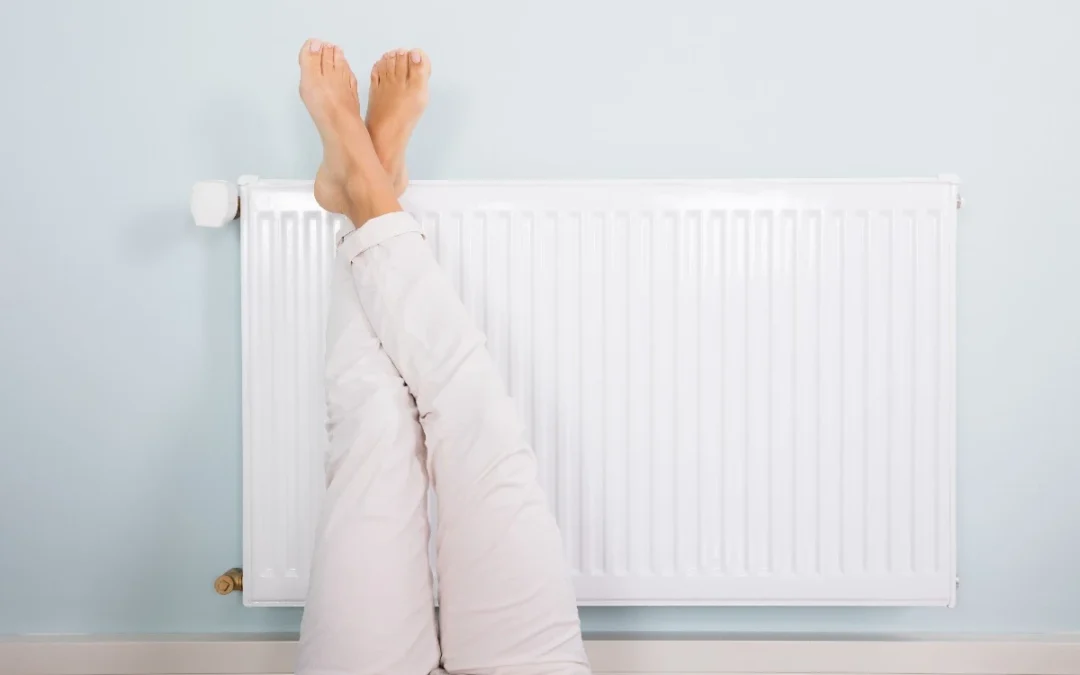Hive systems work as part of a smart home setup, using thermostats and interconnected devices to instruct your boiler when to turn on and when to switch off based on your pre-programmed heating and hot water requirements.
The idea is that, rather than leaving your heating and hot water on at all times and incurring higher utility bills than necessary, you can rely on your hive system to automate these processes and maintain a consistent, comfortable temperature.
One of the big positives is that once your hive heating is ready to use, you don’t need to be at home. Whether you’re heading home after a long day or out in the chilly air, you can access your heating system through a mobile app and ensure your property is warm by the time you return.
What Does a Hive Heating Installation Do?
The hive heating system itself isn’t a boiler – it’s a smart thermostat that comprises three different components:
- A thermostat, which you can place in your chosen location in your home to detect and monitor the temperature.
- A hub provides the functionality to programme your heating system through your app and connects to your Wi-Fi.
- A receiver is wired into your boiler and provides the connection between the Hive hub and the thermostat.
In most cases, you can install a Hive system without making any extensive changes to your central heating and won’t normally need a new boiler. Hive is compatible with almost every boiler and LPG gas heating brand.
There are some caveats, in that Hive doesn’t connect with electric underfloor heating, storage heaters or standalone electric heaters that are plugged directly into a socket. It does though integrate with water-based underfloor heating, gas, combi and oil boilers.
Many clients opt to install a Hive setup when replacing an older boiler or upgrading their central heating system. Using a modern boiler alongside an automated thermostat can further reduce your utility costs and ensure your home is as efficient as possible.
How Is a Hive Heating System Beneficial?
Heating bills rise significantly over the winter, and if your property is older or has less insulation or thin single-glazing, you may find you spend a vast amount on keeping your home warm and comfortable throughout the colder months.
While, in many cases, we might recommend further energy conservation measures to prevent heat from continually escaping and putting strain on your boiler, a Hive system can go some way to avoiding unnecessary costs.
For example, you might wish your rooms to be warmer first thing in the morning and then in the evening when you and your family return from school and work – you might not necessarily need to keep the boiler running constantly to avoid coming back to a cold house.
Likewise, the information available through your Hive system can show you how you are consuming energy and potentially provide insights to help you reduce your energy bills by being more precise about when and how you use your central heating and hot water.
Automating your boiler means it only turns on when you have programmed it to or when the temperature in your property drops below a certain level. Conventional boilers that are not already fitted with thermostats simply operate based on timings.
Setting heating schedules can ensure you minimise energy waste, and Hive can even incorporate geofencing where you specify which areas of your home are heated – ideal for larger properties where some spaces are used less often and don’t need to be kept at the same temperature as the rest of your home.
Ultimately, Hive is about ensuring your boiler works smarter, not harder, and therefore has a longer lifespan and is less likely to break down at the worst possible time.
Can I Install a Hive Heating System Myself?
Hive thermostats are designed to be user-friendly, and there are some models that are intended to be ‘plug-in and go’ solutions. However, the functionality may be limited.
More advanced Hive active heating systems need to have a wired connection with your heating system. We’d always advise caution if you aren’t comfortable that you have the skills or tools necessary to install and wire in a thermostat correctly – and as a baseline standard, we recommend you consult an experienced engineer before conducting any work that affects a gas, electric or oil-based boiler.
The wiring is important because if this hasn’t been connected properly, or the thermostat isn’t level, this can affect the system’s performance or mean the instructions you program into your Hive app aren’t transmitted to the boiler.
For most properties, the thermostat should be fitted in the same place as your current thermostat – if you have one. A heating engineer can provide further advice since the positioning can matter. Ideally, your thermostat must be somewhere central and within the parts of your home you use most often.
It’s also wise to avoid fitting a thermostat anywhere that it could receive skewed data, such as close to a draughty window, radiator, cooker or anything else that produces heat or allows cold air into your home.






